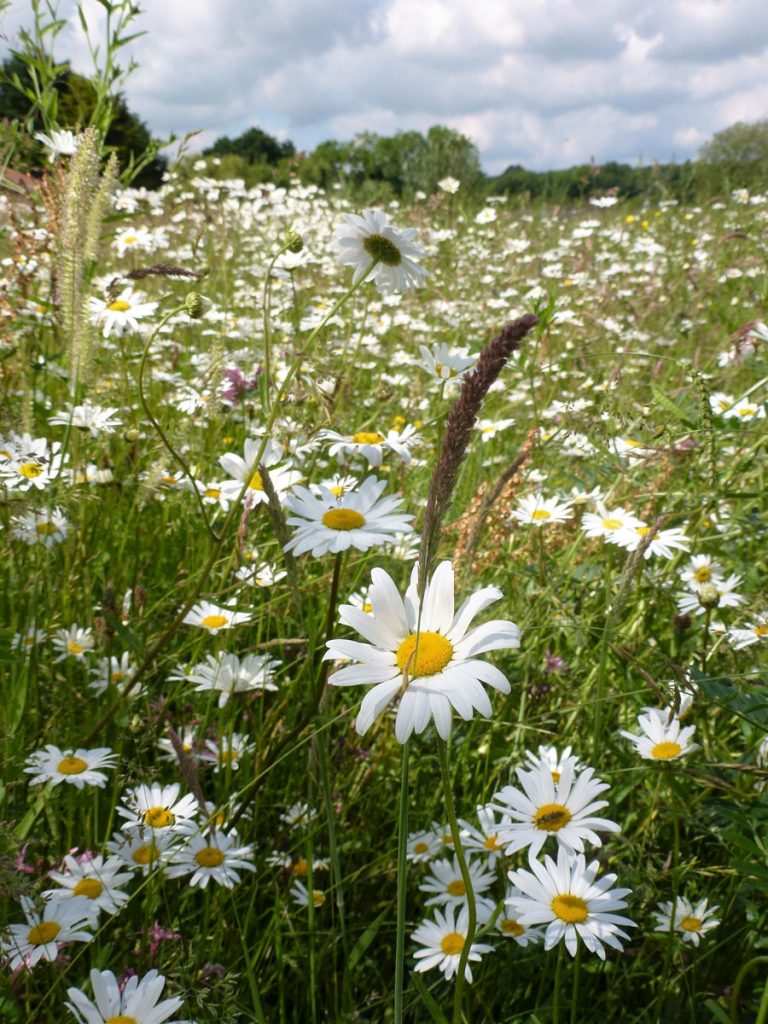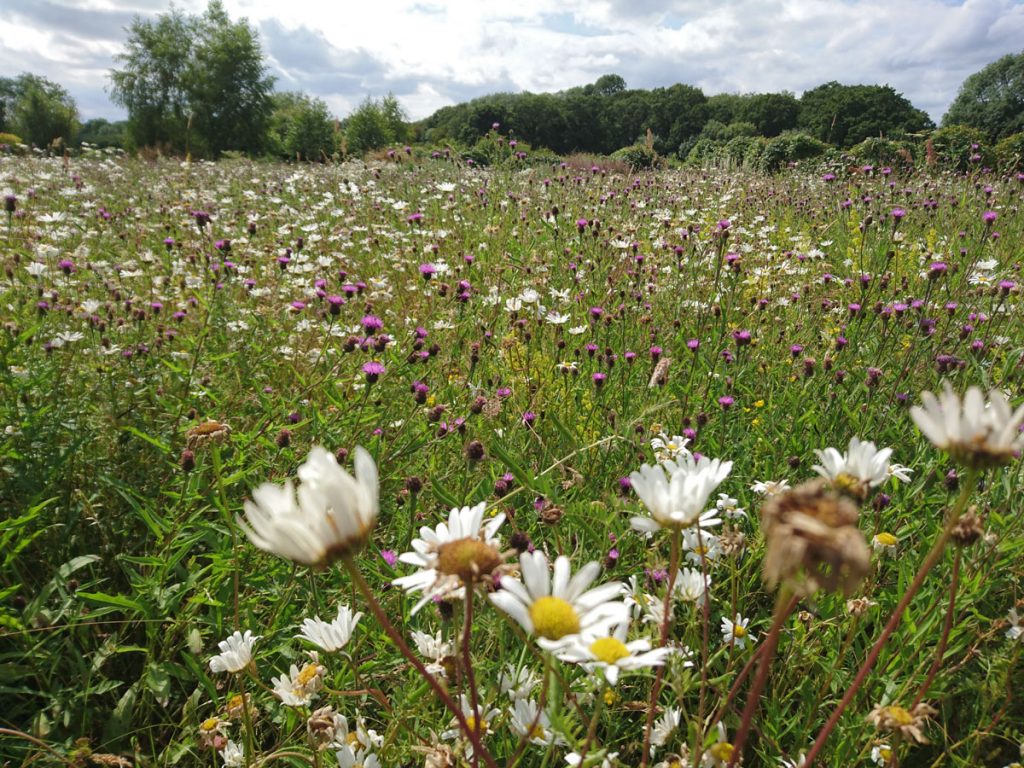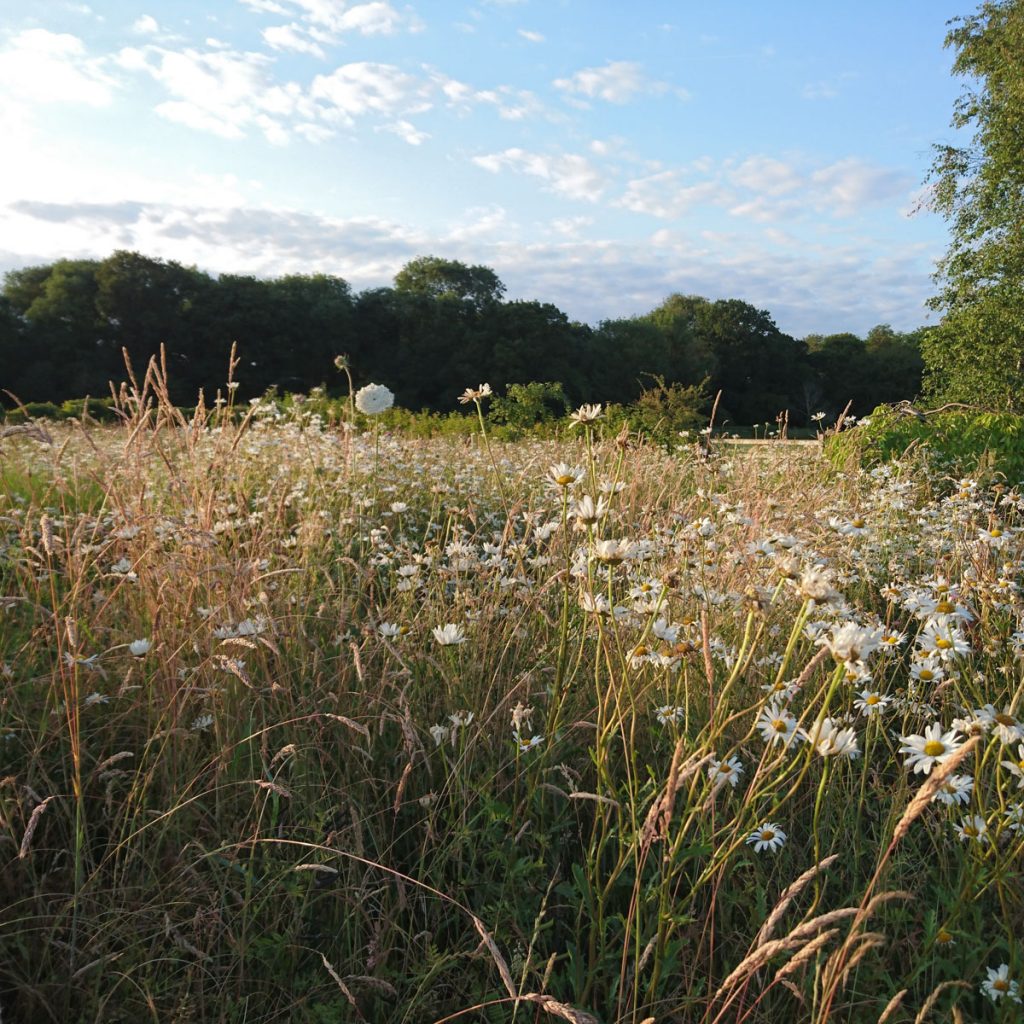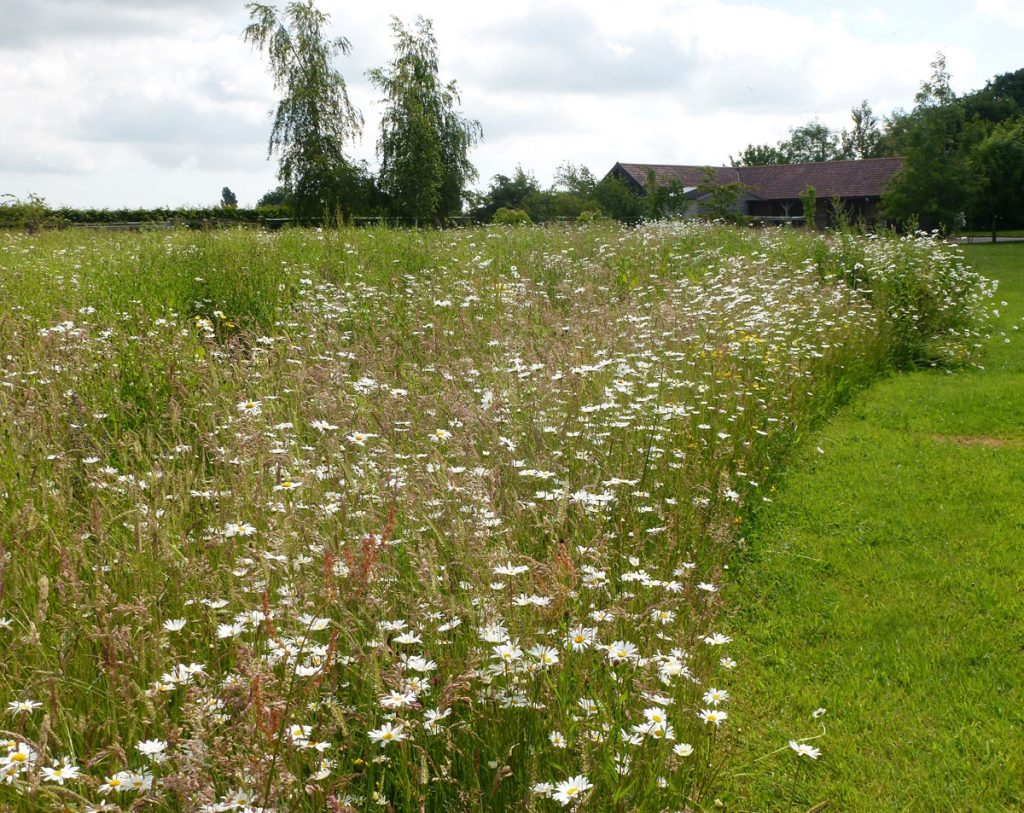Wildflower meadows are in vogue everywhere from Chelsea Flower Show to tiny back gardens. Or at least, something approximating to the Idea of a wildflower meadow. The real thing is a meadow hundreds of years old, grazed by animals and never fertilised, with a complex and long-established ecosystem, sadly now vanishingly rare. The Idea encompasses everything from just leaving a patch of lawn unmown, through carefully created imitations using wildflowers, to the spectacular Piet Oudolf meadow-style schemes using cultivated plants.
I started down the wildflower meadow track when I realised that we seemed to have orchids in our lawn. Of course they never flowered because we mowed over them. Once carefully marked and left to grow, I realised that we had a thriving colony of bee orchids. This led to the idea of leaving larger swathes of grass uncut to see what would appear – more bee orchids, a pyramid orchid and many wild flowers. From this experiment came the urge to glam things up by creating a large expanse of wildflowers within the garden as part of its overall design. This blog is about the process of creating this wildflower ‘meadow’ and what I learned from it.

Seeds or turf
I used a mix of seeds and wildflower turf. I would highly recommend using all wildflower turf if you can afford it, it is really an ‘instant’ meadow, and because the wildflowers are all really well established in the turf, there is no chance for nasty perennial weeds like dock and thistle to get established. However, even if you just use some turf dotted about the planting area, with seeds over the rest, the turf will create established ‘islands’ which will seed about and help the overall meadow get established more quickly.

Choose the right mix
The right seed or turf mix for your locale and soil type is important. For example a chalk mix would not work in East Anglian heavy clay soil and vice versa. There are specialist suppliers/landscapers who can advise. Making a DIY mix or just buying packets of seeds is trickier, but could be cheaper option with some research on which plants to choose. In any event the meadow will evolve over time, as the mix of plants changes to reflect the local soil, plant population and microclimate. The relative dominance of the plants in the mix also waxes and wanes depending on the rainfall and temperature over the seasons.
Adding to the mix via plugs or seeds can speed up diversification – cowslips from a friends garden have been a great success – however ‘right plant, right place’ still applies. Trying to recreate the swathes of fritillaries or camassii seen in famous gardens will not work if the soil and aspect are not just right. The poppy, that most iconic of wildflowers, refuses to grow in my meadow at all.

Poor soil works best
Wildflowers need poor soil to thrive, or they will get smothered by grasses and perennial weeds such as nettles, docks and creeping thistle. If these are already present they must be dug out or sprayed off before the meadow is planted. Good topsoil is too rich, especially if it has been cultivated or fertilised. As the area I chose for my meadow had been part of a fertilised paddock, I had all the topsoil stripped off by a digger so that the wildflower seeds and turf could go directly onto the subsoil.

Weeding and watering are important
It may seem unnecessary given that it’s a ‘wild’ planting, but it’s important to water the whole planting area regularly in the first spring/summer season if the weather is dry. This is absolutely essential with wildflower turf, but will also help the seedlings to grow strongly, so that perennial weeds such as nettles, thistles and dock don’t take over on the bare patches. Keeping on top of these perennial weeds is vital, especially in the early years (wildflower meadows are not low maintenance!) Obviously these would be present in a natural meadow, but it’s amazing how quickly the more thuggish weeds will spread and take over at the expense of the more desirable wildflowers if not controlled.
If you are planting in an area surrounded by grass, you can encourage the wildflowers to spread out by using yellow rattle seeded into the grass. Yellow rattle is parasitic on grass and weakens it so that wildflowers can seed into it. I have successfully used this to encourage the original wildflower planting to increase in size by about a third into adjacent grass. If you are just letting a patch of grass grow unmown, using yellow rattle is also a good way to speed up the process of diversification.

Slash and burn
My meadow is cut only once a year, after the flowers have gone to seed (late August or early September). Some gardeners choose to cut once in the spring as well, before the wildflowers really get going. By late summer, an area dense with wildflowers will be too woody to cut with a normal mower. I find that strimming works best, but there are specialist heavy duty mowers which will do the task. After leaving the cut stalks on the ground for a day or two to allow seeding and for insects to relocate, all the cuttings should be removed and burned or composted. Make sure to cut the meadow during a spell of dry weather if you plan to burn the cuttings afterwards. Letting the plants just die back over the winter, or leaving the cuttings on the ground, puts too much nitrogen back into the soil and over time it will become too rich for the wildflowers to survive. Likewise any burning should not be done on the meadow, as the ash will have the same effect.
In my garden I chose to have the wildflowers centre stage amid the perennial borders. It’s a gorgeous centrepiece which looks wonderful even in decay, and then reverts to a rather lumpy greensward over the winter. Its proximity to the borders creates some problems with wildflowers seeding into the beds – ox-eye daisies are especially pernicious. The process works in reverse too; Ammi majus has seeded into the meadow and looks quite at home. My experience has been invaluable to using wildflower swathes in wildlife gardens or as part of larger more formal designs. It’s certainly not a ‘low maintenance’ option, but it’s well worth it for the sheer spectacle in full bloom, alive with bees, butterflies and myriad other insects.




